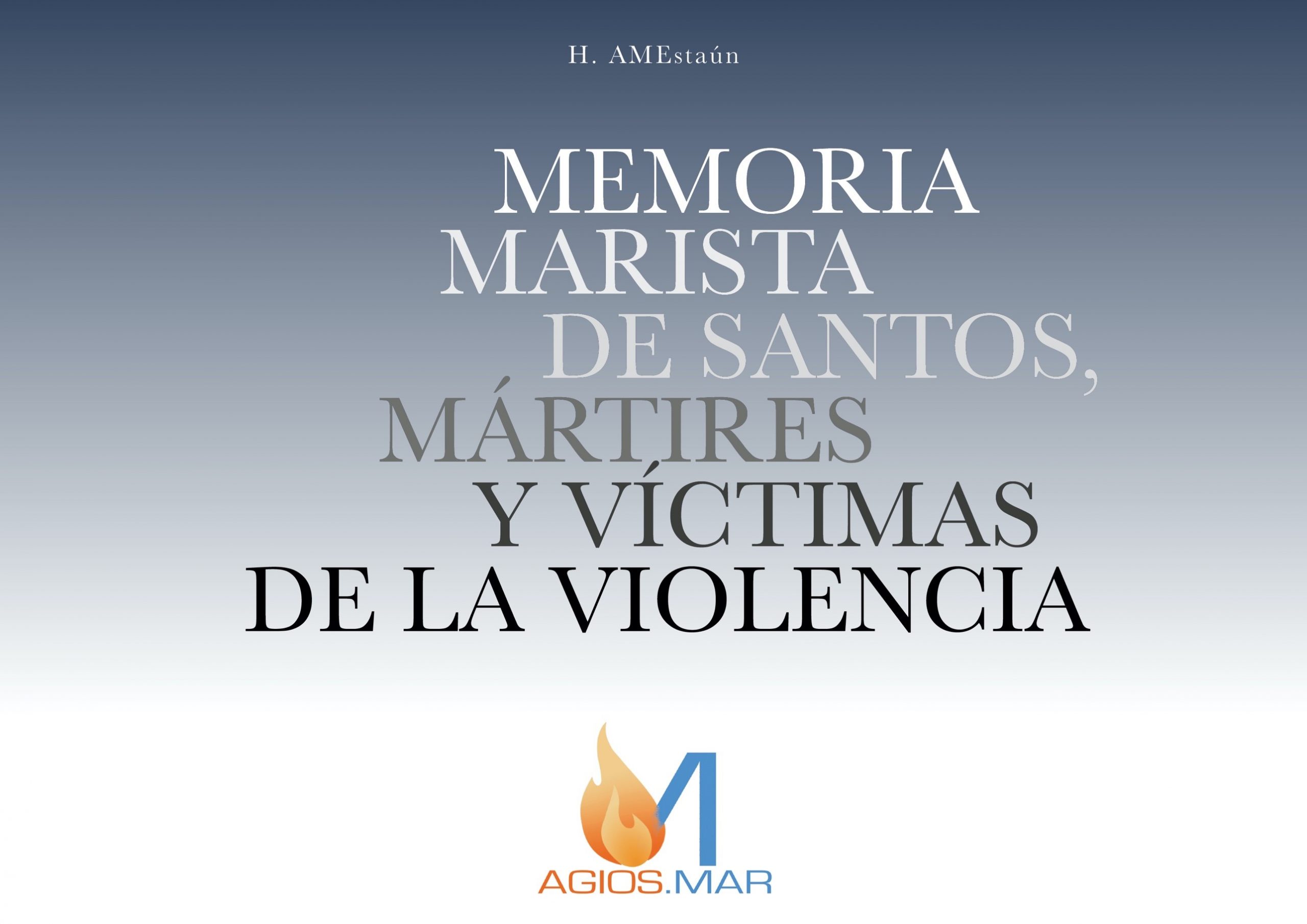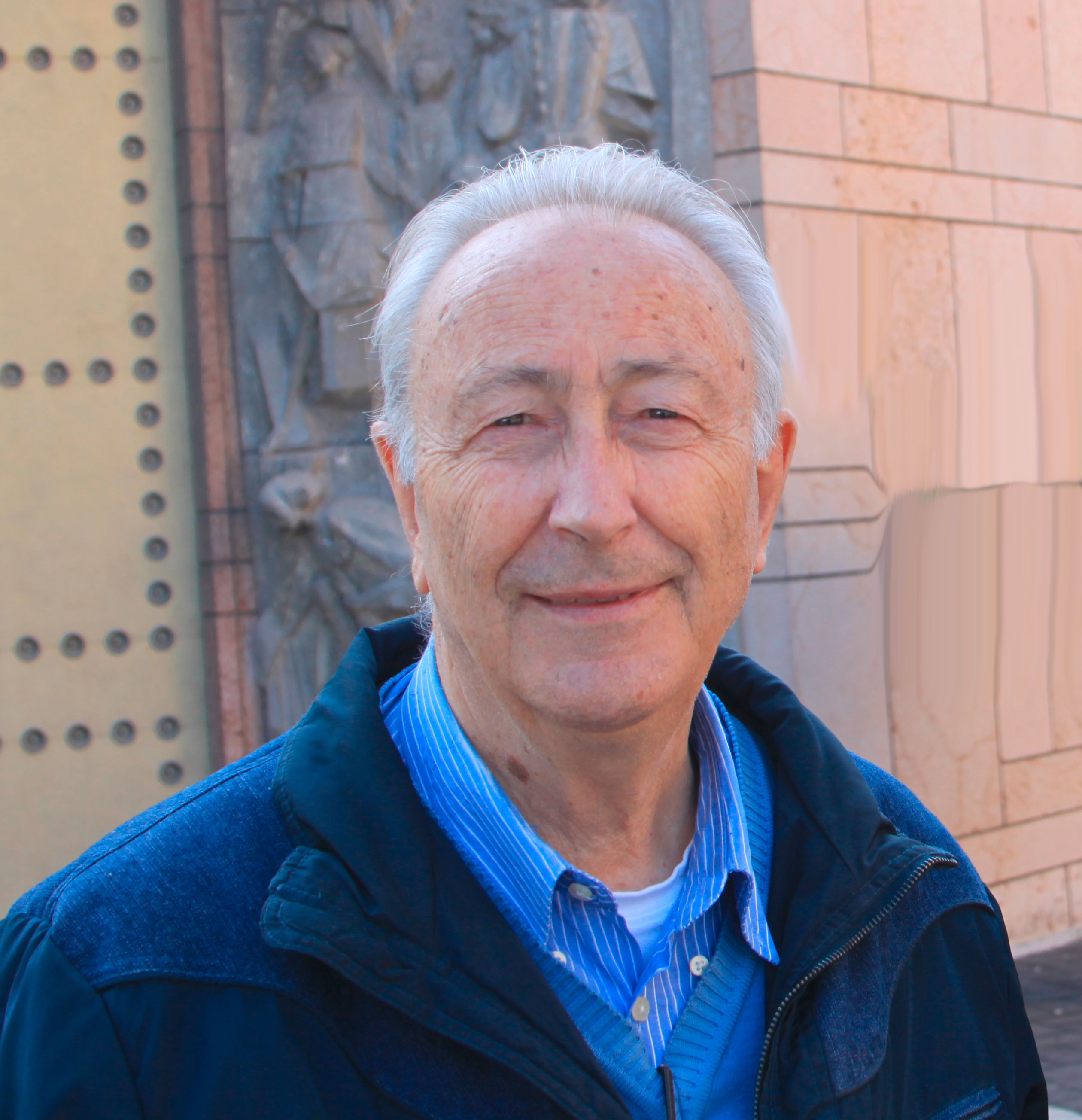
Marist Memorial of Saints, Martyrs and Victims of Violence
Brother Antonio Estaún, Postulator General, has drawn up a traditional Marist religious calendar including the Marist Brothers who have died with a reputation for holiness through the exercise of virtues or because they were victims of violence as a result of their fidelity to the faith. Some copies of the book, available only in Spanish, were sent to the Administrative Units last June. If any volunteer would like to translate it into his or her own language, please contact the Communications Office.
Here is the introduction to this work, available in PDF.

This document, entitled Marist Memorial of Saints, Martyrs and Victims of Violence, prepared by the General Postulation of the Marist Brothers, complements, from the date of its publication, the traditional Marist religious calendar by listing the names of the Marist Brothers who died with a reputation for sanctity through the exercise of the virtues or because they were victims of violence as a consequence of their fidelity to the faith.
In this list, various groups of people stand out, taking into account as a classification criterion the state of the canonical process of their cause or, if this has not been initiated, the non-existence of the same. The canonical process begins with the official recognition of the public worship of the Servant of God first as Venerable, then as Blessed, and the process concludes with the official recognition of worship as a Saint. The canonical recognition of the holiness of a Christian implies the officialisation of a public liturgical cult and the inclusion of his name in the list of saints and in the liturgical calendar by dedicating a date to the celebration of his feast with its own office.
In the first place, together with Champagnat, already canonised, a group of brothers who have acquired a reputation for sanctity in the Institute and whose process of beatification has been opened are Brothers François Rivat, Alfano Vaser and Basilio Rueda. The canonical process for the declaration of the reputation of sanctity, acquired by the practice of the Christian virtues of these brothers to a heroic degree, has gone through or is going through various stages which we will not indicate here.
The second group of this list is made up of the Brothers martyrs who died as victims of violence because of their fidelity to the faith. In this group we include the name of the 177 brothers and two laypeople who have been recorded in the Marist Martyrology of Spain (1909-1939). This list highlights the 113 Marist Brothers and 2 lay people recognised as martyrs when they were proclaimed Blessed, (47 in 2007 and 68 in 2013), and those who are recognised as Servants of God because the process of their cause of beatification has been started but has not yet been completed. This is the case of Brother Joché-Albert Ly, whose cause is being processed by the Lazarist Fathers together with other martyrs of China; that of Brother Lycarion, the first brother to die violently in Spain during the Tragic Week of Barcelona, whose cause is being introduced in Rome; or that of Brother Eusebio and 58 companion martyrs who constitute the third group of Brothers from Spain whose cause is being processed in Rome and who were killed during the religious persecution that occurred in that country between the years 1936-1939 and who have not yet been beatified.
To this list must be added the cause of Brother Henri Vergès, who was beatified in Oran on December 8, 2018. This cause is known as that of “the martyrs of Algeria”, and is headed by Mn. Pierre Claverie, of the Order of Friars Preachers, Bishop of Oran, and 18 fellow religious, killed through hatred of the faith, in Algeria, killed between 1994 and 1996 during the Algerian civil war.
The third group includes the names of Marist Brothers who have died victims of violence allegedly because they were faithful to their faith, even though their causes of beatification have not been initiated, but their heroic death is witnessed by the authority of the Institute. In this group of Brothers are Canisius Nyilinkindi, Christopher Mannion, Etienne Rwesa, Fabien Bisengimana, Gaspard Gatali and Joseph Rushigajiki, Moisés Cisneros, Miguel Ángel Isla, Servando Mayor, Julio Rodríguez, Fernando de la Fuente. Also the French brothers Jules Andre, Joseph Félicité, Joseph Marie Adon, Leon, Louis Maurice, Joseph Amphien, Prosper Victor, Marius who died in China. To these names we must add that of the Chinese postulant Pablo Chen, that of Brother Euloge (French, killed in New Zealand), and Hyacinthe (French), John William, Augustinus and Donatus Joseph (Australians killed in the Solomon Islands) whose violent death is recorded through the authority of Brother Benito Arbués, Superior General of the Institute, in his circular Fidelity to the mission in situations of social crisis (1998). Also included are the names of Brothers Agustin Liu, Antoine Hsio, Marcellinus Yang, Ernest Chang, Marie Xavier Chang, and Emile Chang, who died in China from hunger, cold, or condemned to forced labour in labour camps. Brother Laurence Tung On, Provincial of China, testified to their silent martyrdom in a letter to Brother Basilio Rueda, Superior General, on September 8, 1979.
No mention is made of the names of the brothers who died on the battlefield, except those of the Servants of God, Brothers Fidencio and Valero Paulino, whose causes of beatification were introduced in Rome in 1998, and three Australian brothers who have disappeared. Nor are the names of the brothers who were victims of violence due to robbery, assault, theft or other reasons of social violence.
Each of the brothers is referred to by the name of his religion followed by his first name with the surname or surnames, the nation of origin, the year of birth, the place and the date of his death, when it has been possible to document it. The custom of changing the first name to the religious name was discontinued after the decision of the 15th General Chapter (1959), which is why some names appear only with the family name.
The names are preceded by the identification of their process, if it has been initiated, with the terms Blessed, Venerable or Servant of God. The other cases are preceded by H. for the brothers or M. for the laity.
The chronological criterion which organises the calendar successively refers to the day of the death of the protagonists (dies natalis) according to the Church’s custom of celebrating the day from birth to the life of resurrection.
The liturgical calendar of the Church when it beatifies or canonizes a group of martyrs identifies the members of the group with the name of the most outstanding person in the group for his or her leadership within the group followed by the expression “and fellow martyrs”. This practice arises especially in the processes carried out to demonstrate the fame of sanctity or martyrdom both in its diocesan and Roman phase and is explained by the complexity involved in naming each of the protagonists every time the whole group is referred to. But with this custom there is a great danger that the members of the group will remain anonymous behind the expression “fellow martyrs”. It is certain that, at least in the case of our brothers, the fact of dying together or victims of similar circumstances offers us a very valuable sign: they lived and, many of them, died together, in community. But there is a danger that by keeping the names in the collective, the value of the testimony of individuality is lost. For this reason, in this “Memorial”, the circumstantial or pragmatic grouping, which was made for the beatification, has not been taken into account, but the date of death of the protagonists. This option does not imply nor does it intend any interference in the liturgical celebration of the members of the same group on the date indicated by the liturgical calendar of the universal Church.
Interspersed with the reference to the vicissitudes of the brothers are some significant news related to the processes of beatification and canonisation with the aim of maintaining the historical memory of the iter. In order to differentiate them from the rest of the text, the size of the letter is smaller. The sign * indicates the date of birth and the sign + alludes to that of death.
We offer this resource of animation for our communities of brothers and also for the lay Marists as a fruit of the celebration of the anniversary of the 200 years of the foundation of the Institute, in honour of those who preceded us with the gift of their life to the Lord and fidelity to the Marist charism, wishing that the knowledge and the appreciation of the marvellous companions who came before us in the house of the Father grow more and more each day.
__________________
Br. Antonio Martínez Estaún – Postulator General
PDF: Marist Memorial of Saints, Martyrs and Victims of Violence
